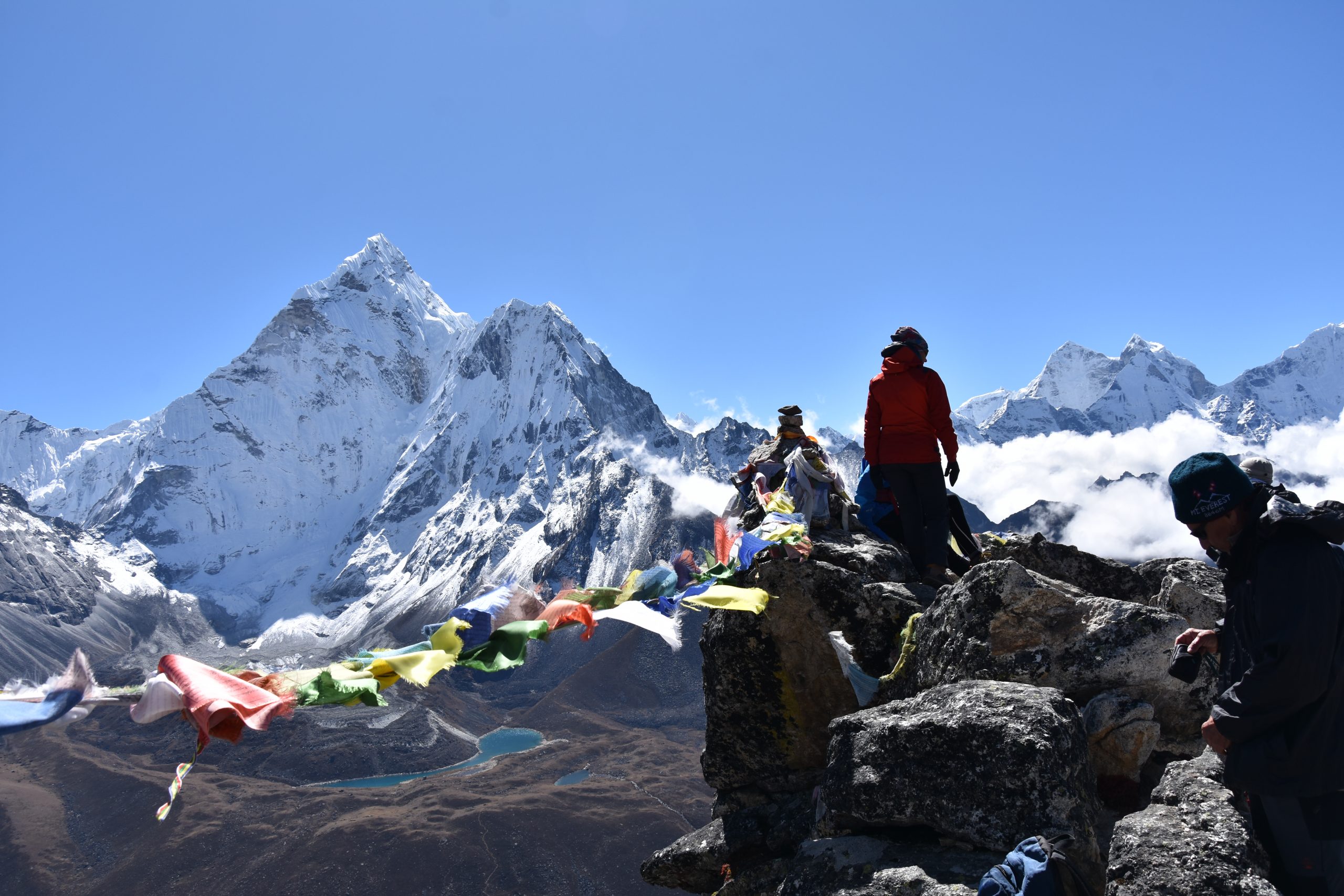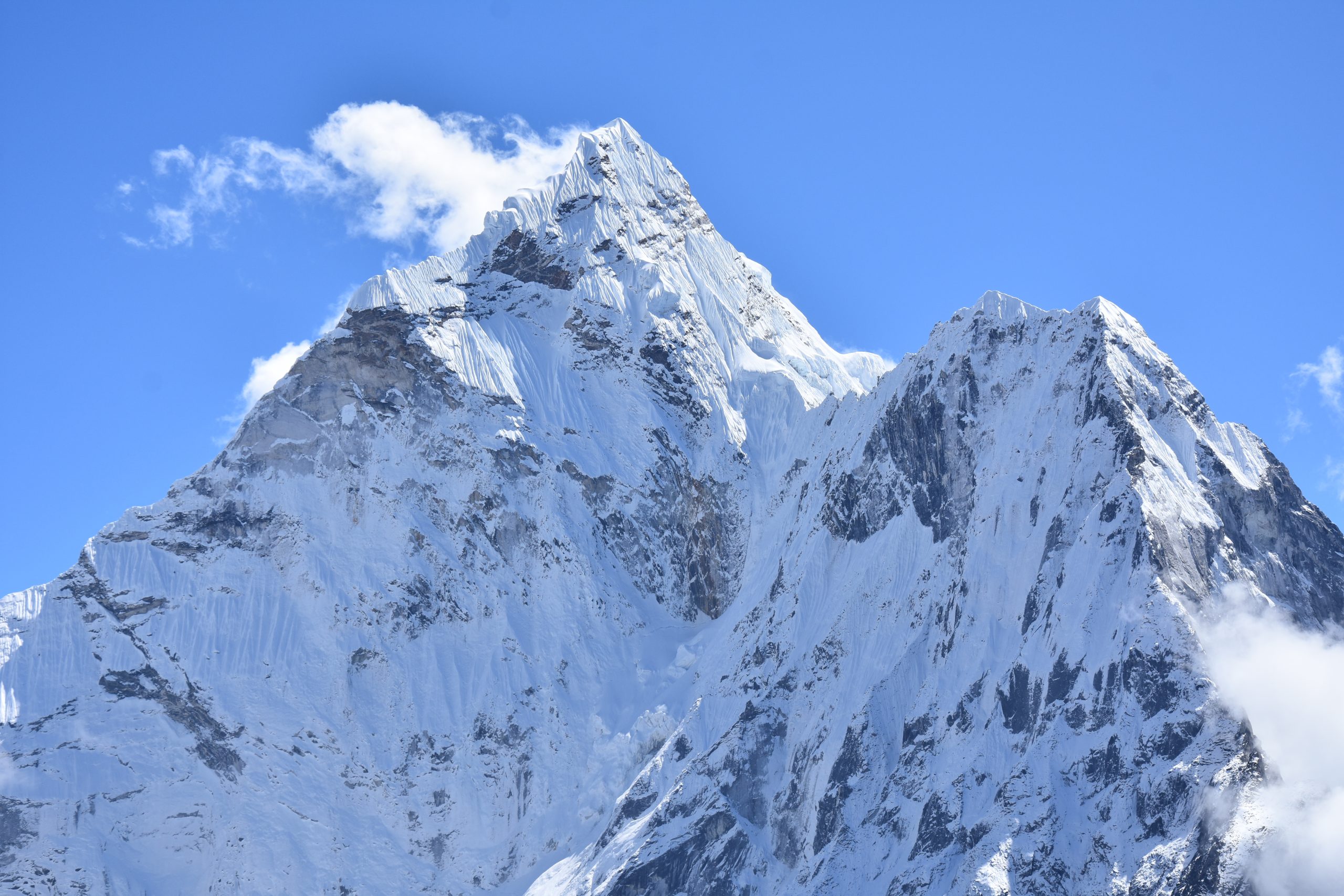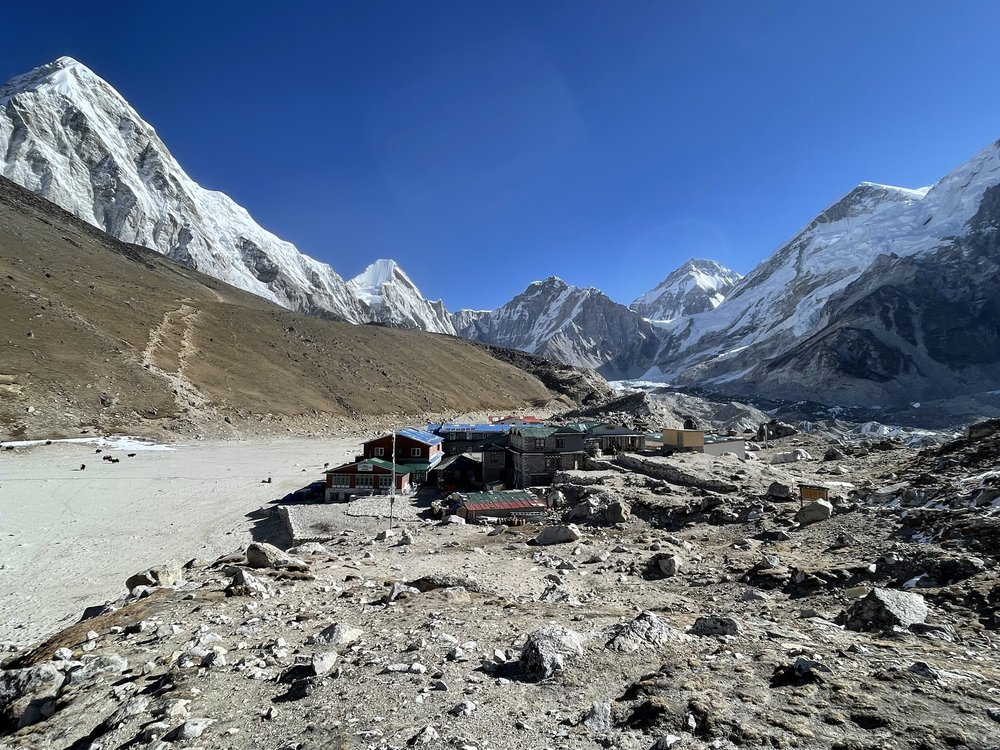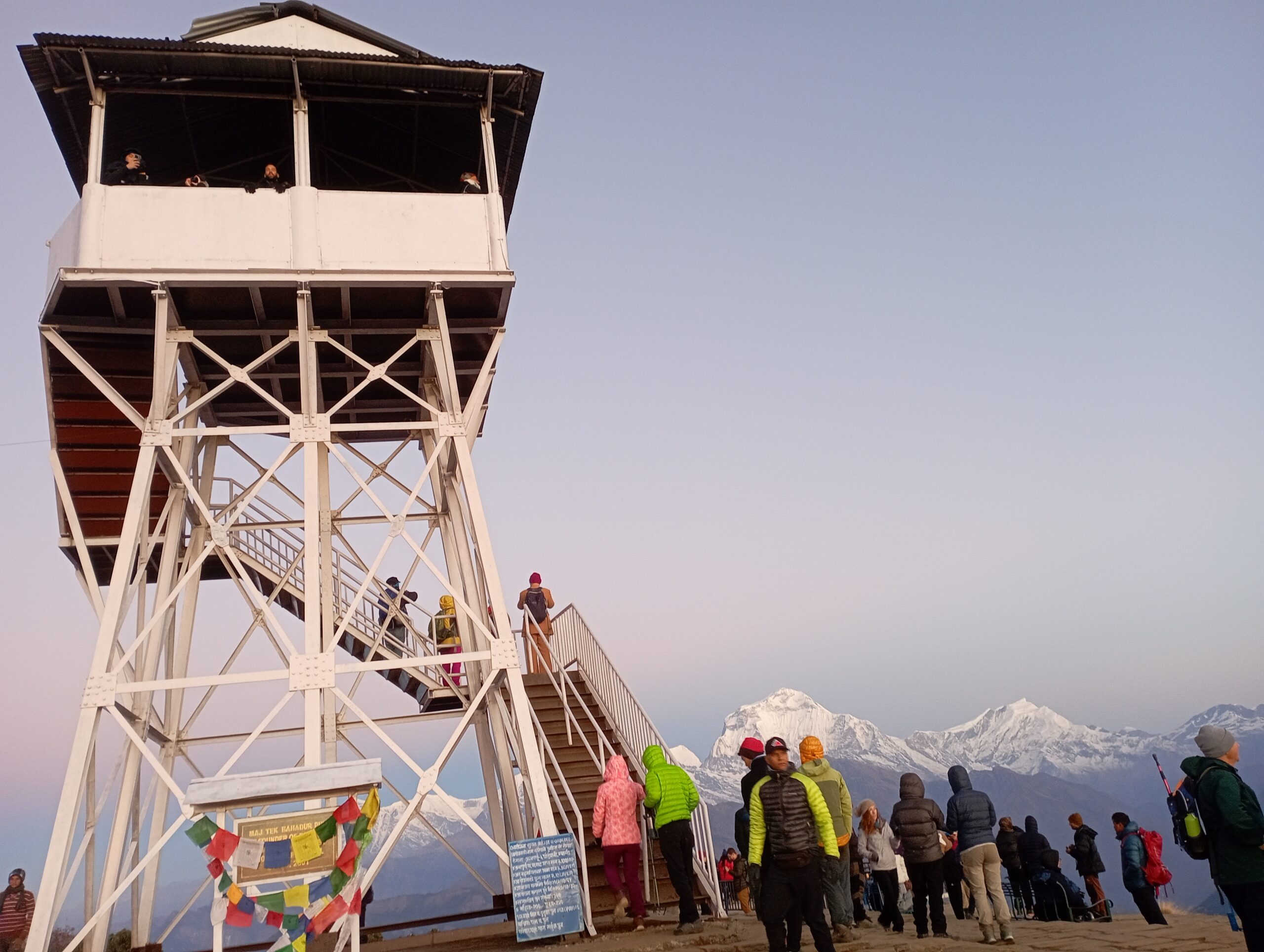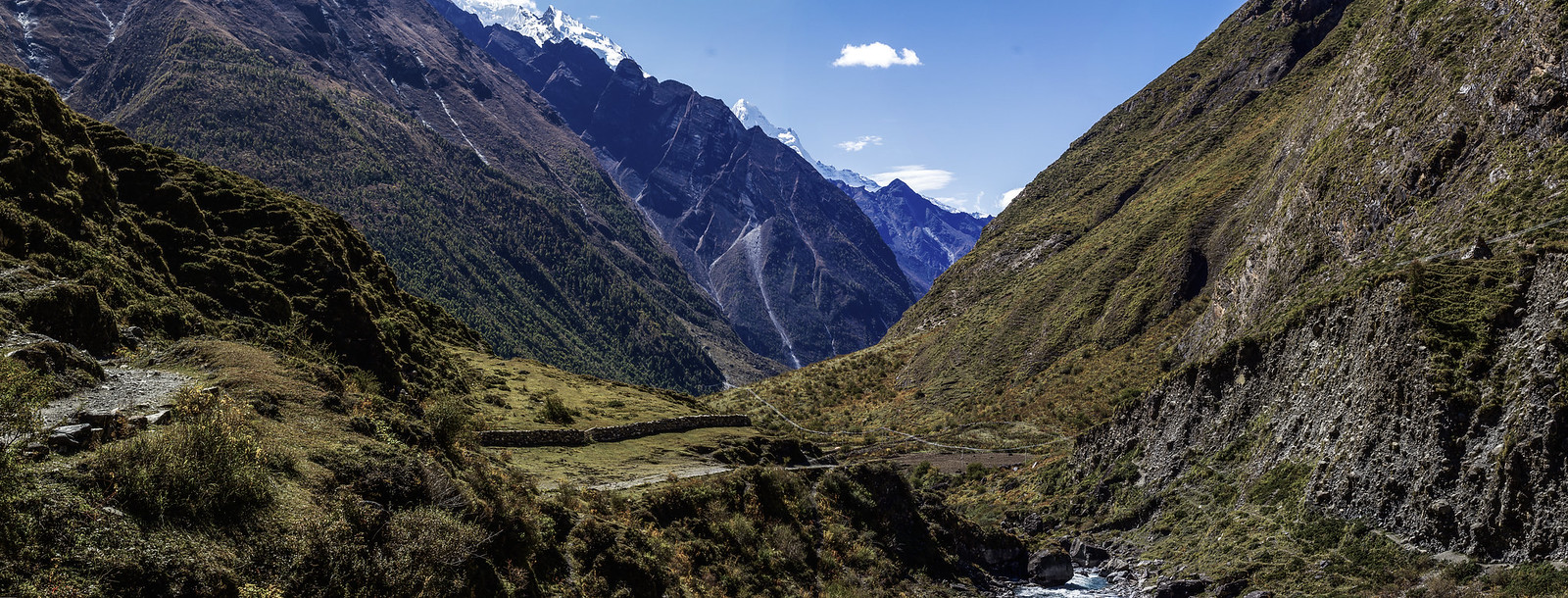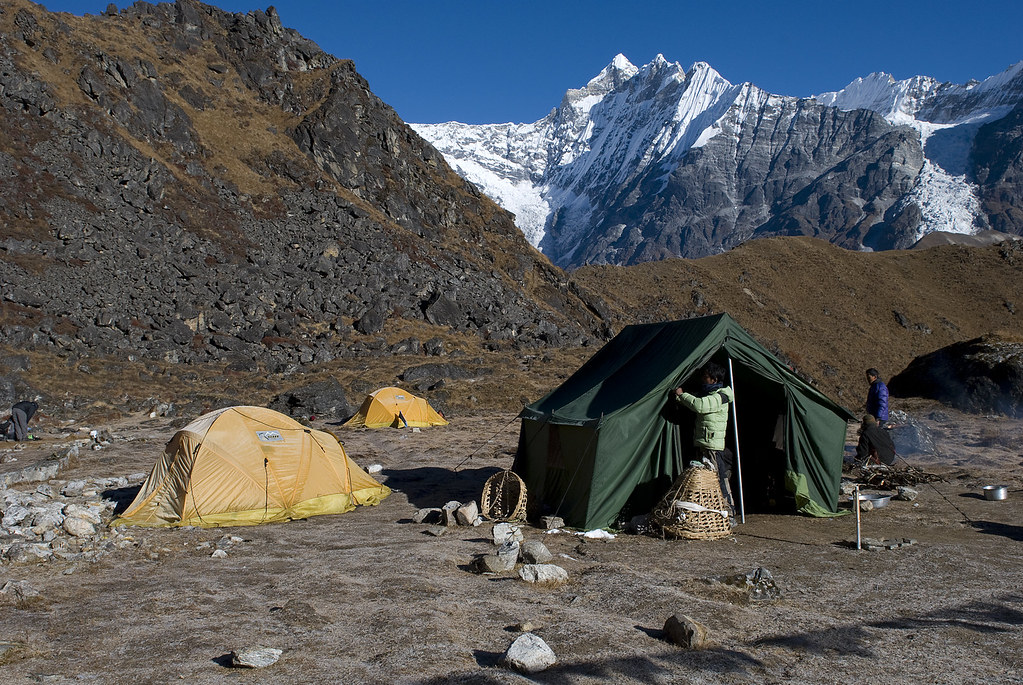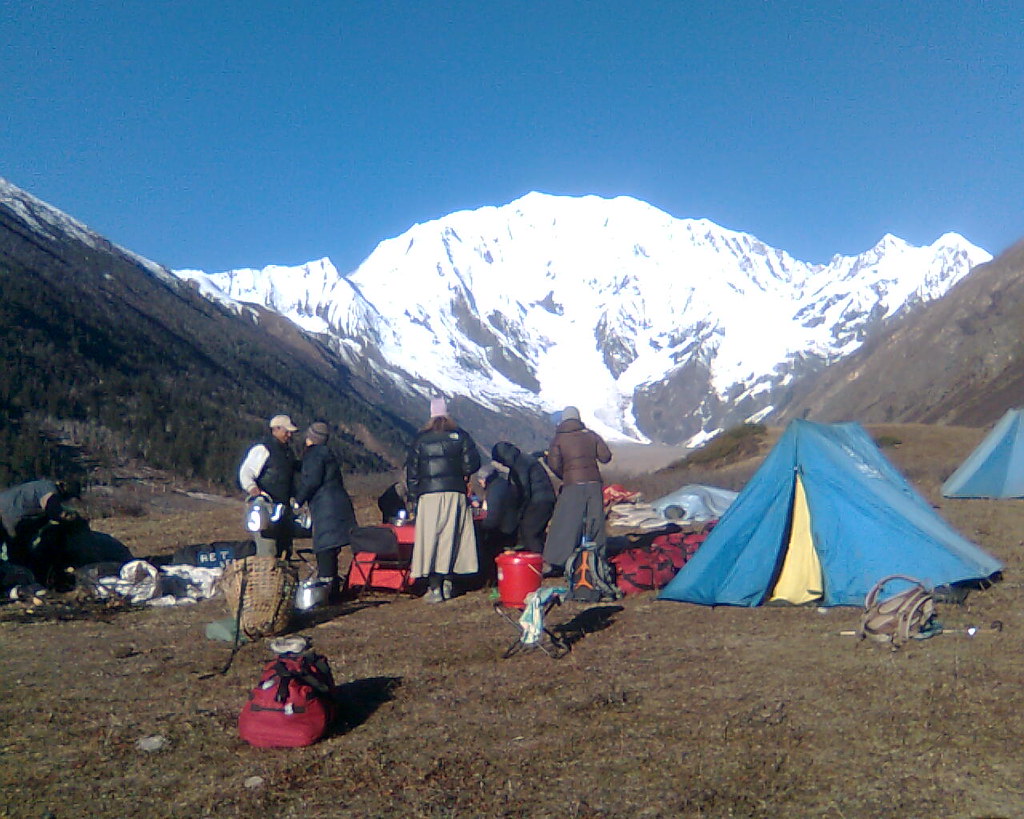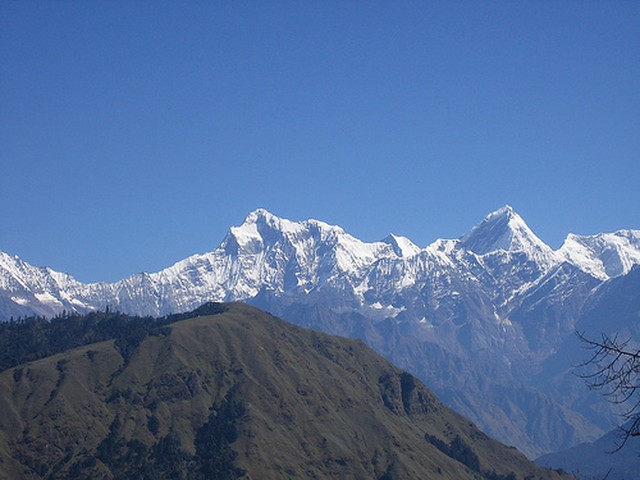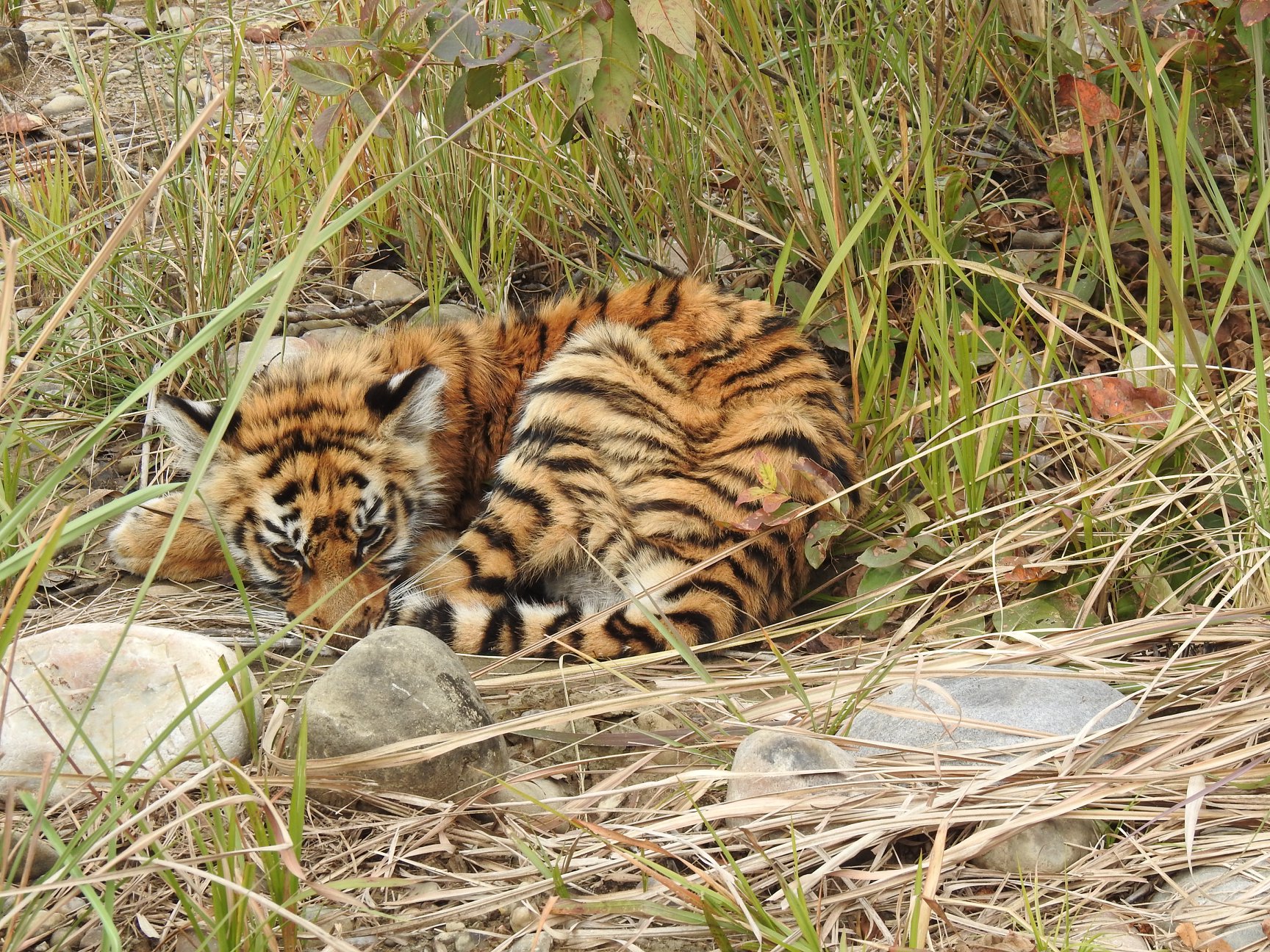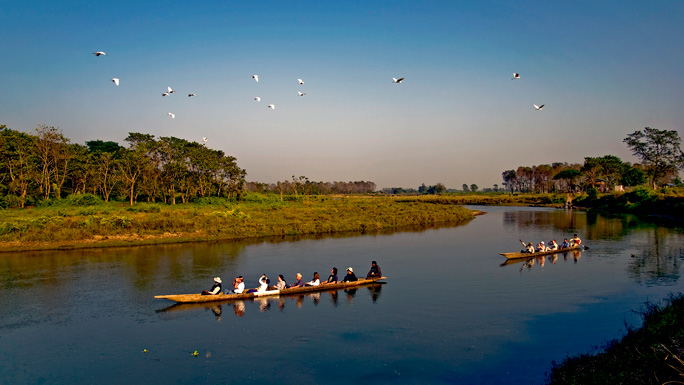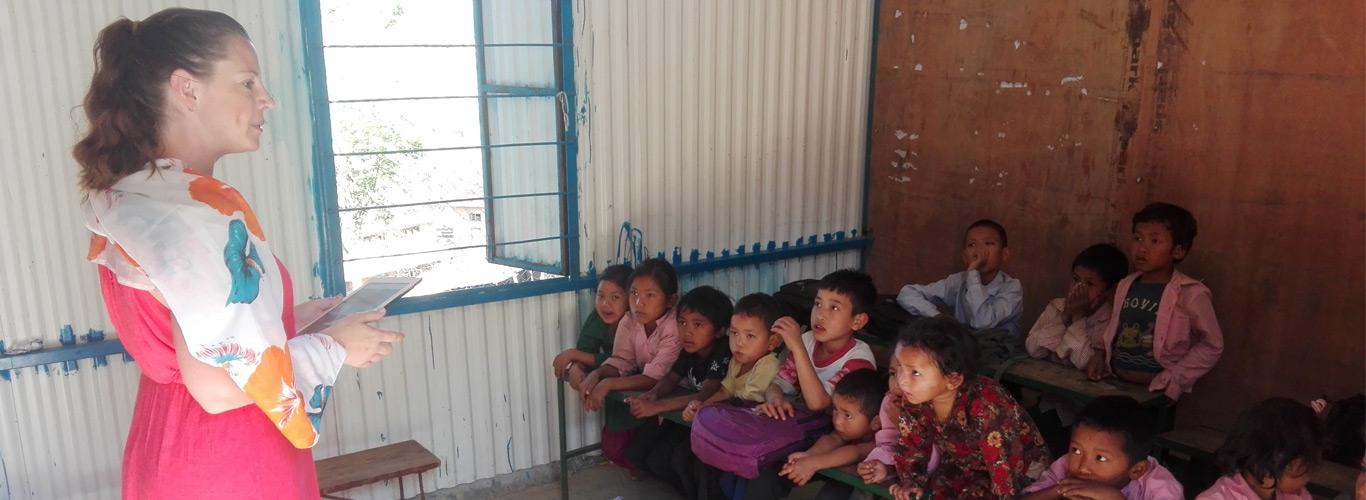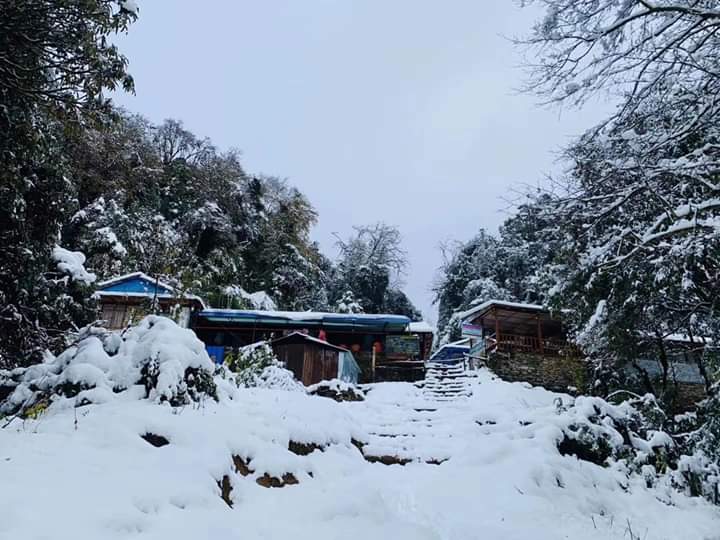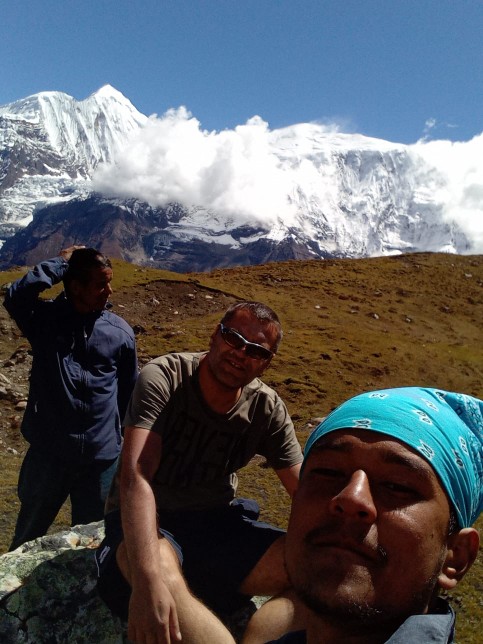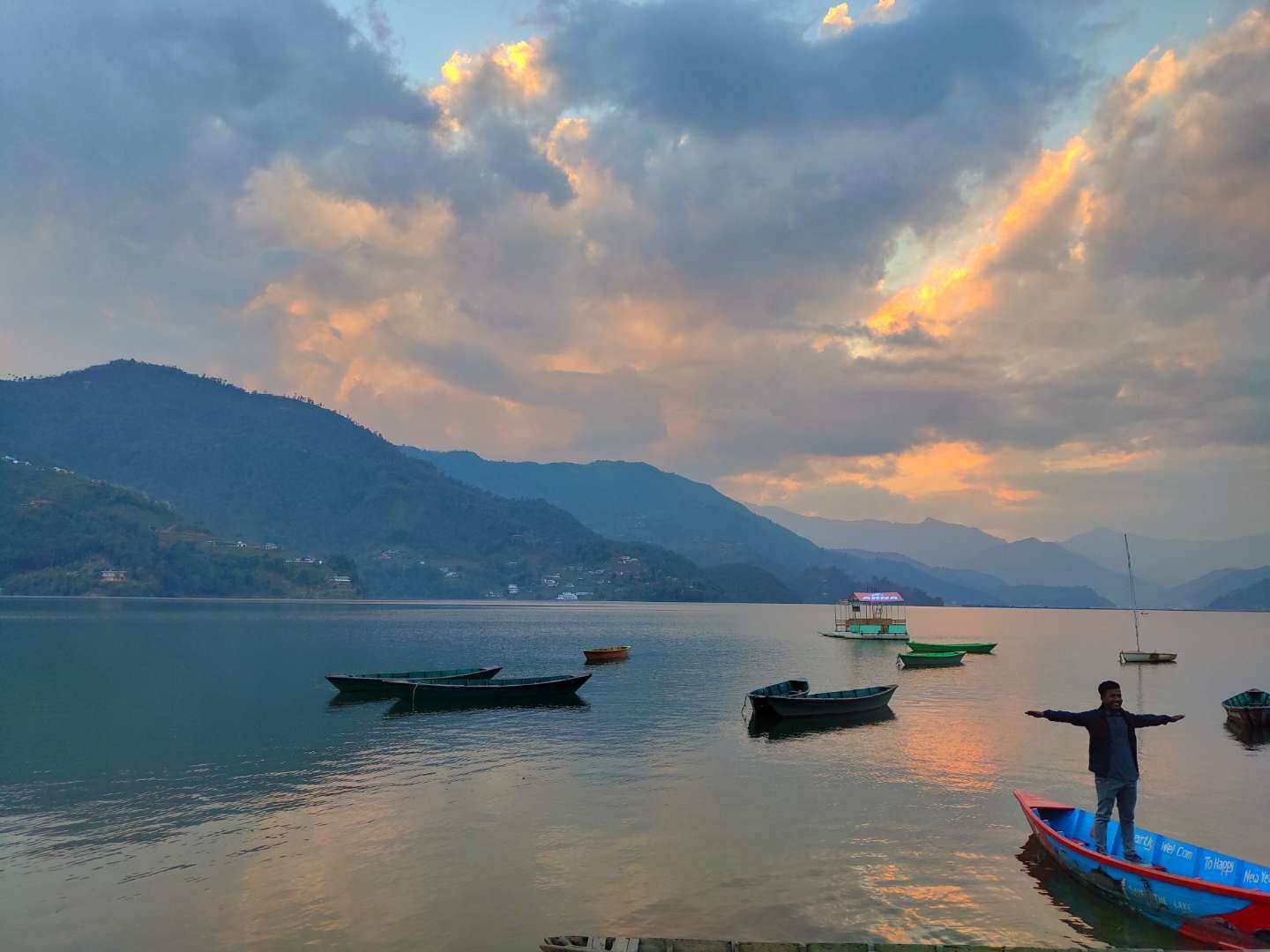Everest Base Camp
Everest Base Camp Trek is one of the foremost prevalent and unforgettable experience goals within the Himalayas. The landscape is impressive, bright peaks, impressive glaciers, and ancient and precious monasteries are the key to sublimity. The lovely Sherpa people, their culture, and their tradition add more charm to this historic trekking. We have an exciting flight to Lukla and start guiding the adventure to Everest Base Camp in Nepal. Walking along the Dudh Koshi River, we climbed to reach the Sherpa capital “Namche Bazaar”.
Everest Base Camp Trek is one of the most well-renowned trekking routes in the world. This trek also offers a great opportunity to see some of the most astonishing close-up views of Himalayan Vistas. Nepal is a mesmerizing nation and trekking in the Everest region gives clear insight into the culture, lifestyle, and tradition of the Sherpa communal. Our trekking trail is a fusion of steep ascents, and descents, and scheduled to get proper acclimatization. The sunrise view over the snow-capped world’s highest mountain and surrounding peaks from Kala Patthar is magical and memorable. This Everest Base Camp trekking is also one for the lover of high places and those wanting to push themselves to the limit.
Day 01: Kathmandu – Lukla – Phakding(2,651m/8,700ft): 30 minutes flight, 3 – 4 hr
Day 02: Phakding – Namche (3,438m/11,280 ft): 4- 5 hr
Day 03: Acclimatization Day – Namche Bazaar: (3,440m/11,284ft
Day 04: Namche Bazaar to Tengboche (3,870m/12,694ft): 5- 6 hours
Day 05: Tengboche to Dingboche(4,358m/14,295 ft) 5 – 6 hour
Day 06: Dingboche: Acclimatization(4,358m/14,295 ft)
Day 07: Dingboche – Lobuche(4,928m/16164 ft)
Day 08: Lobuche – Gorak Shep (5,160m/16,929ft) – Everest Base Camp (5,320m/17,450ft)
Day 09: Gorakshep – Kala Pathar (5,550m/18,204ft) – Pheriche(4200 m)
Day 10: Trek to Namche Bazaar(3,500m/11,480ft) – 7 hours
Day 11: Trek to Lukla (2,804 m) – 6 hours
Day 12: Lukla – Kathmandu (1400 m)
Day 01: Kathmandu – Lukla – Phakding (2,651m/8,700ft): 30-minute flight, (3-4 hours)
We take an early morning flight to Lukla and start our trek. We traverse through Cheplung village to reach Phakding for 3/4 hours. A superb view of Mt. Khumbila, a sacred mountain that has never been summited. Overnight at Phakding.
Included Meals: Breakfast, Lunch, and Dinner
Day 02: Phakding – Namche (3,438m/11,280 ft): (4- 5 hours)
We continue our walk on the trail up to the Benkar Valley. We cross the Dudh Koshi River and traverse Chumoa and Monjo villages taking us to the entrance of the Sagarmatha National Park. Walk alongside Dudh Koshi and Bhotekoshi rivers crossing over a suspension bridge traversing Jorsale village. Ascend on a steep trail until you reach the Sherpa capital Namche Bazaar. Overnight in Namche Bazaar.
Included Meals: Breakfast, Lunch, and Dinner
Day 03: Acclimatization Day – Namche Bazaar: (3,440m/11,284ft)
Today is a much-required acclimatization day. Tour around Namche Bazaar and visit Sagarmatha National Park. Adore the diverse fauna and may witness some birds and animals as well. Enjoy the awesome view of Mt. Everest, Lhotse, Nuptse, and other surrounding snowy peaks. Alternatively, visit Khumjung village. Overnight in Namche Bazaar.
Included Meals: Breakfast, Lunch, and Dinner
Day 04: Namche Bazaar to Tengboche (3,870m/12,694ft): (5- 6 hours)
An easy and comfortable walk to Phunki. From there, climb uphill passing through a beautiful landscape and exploring the largest Tengboche Monastery in that region. The panoramic vistas of the Himalayas, including Mt. Everest, Nuptse, Lhotse, Ama Dablam, and are in the background of the monastery. The Tengboche Monastery opens at 3:00 pm, so if we reach there by 4 o’clock we can observe a Buddhist religious ceremony.
Included Meals: Breakfast, Lunch, and Dinner
Day 05: Tengboche to Dingboche (4,358m/14,295 ft) (5 – 6 hours)
We descend to Debuche and reach Pangboche by crossing the Imja River. The trek continues passing through the upper Pangboche trail and witnessing the Pangboche Monastery. Passing through Imja Valley we reach Dingboche. Overnight at Dingboche.
Included Meals: Breakfast, Lunch, and Dinner
Day 06: Dingboche: Acclimatization (4,358m/14,295 ft)
An acclimatization day at Dingboche to adapt to the high altitude. We hike to the hill behind Dingboche to view the world’s tallest peaks including Lhotse, Makalu, and Cho Oyu. Overnight at Dingboche.
Included Meals: Breakfast, Lunch, and Dinner
Day 07: Dingboche – Lobuche (4,928m/16164 ft ) (7 hours)
We traverse through Dughla Pass admiring the beautiful views en route to reaching Lobuche. Stay overnight.
Included Meals: Breakfast, Lunch, and Dinner
Day 08: Lobuche – Gorak Shep (5,160m/16,929ft) – Everest Base Camp (5,320m/17,450ft) (9 hours)
Today we continue our trek to Everest Base camp walking a long day. Have lunch at a lodge upon reaching Gorakshep. A gradual walk to the Everest Base Camp. Relish stunning views of Mt. Pumori, Khumbutse, and Nuptse. Return to Gorakshep following the same trail. Stay overnight.
Included Meals: Breakfast, Lunch, and Dinner
Day 09: Gorakshep – Kala Patthar (5,550m/18,204ft) – Pheriche(4200 m) (7 hours)
After early breakfast, we walk up to the highest point of the trek, Kala Patthar for a magnificent view of the world’s tallest Everest, and several other mountains like Lingtren, Khumbutse, and Changtse mountains. After spending some time at the summit of Kala Patthar, we walk back to Gorakshep for lunch which is relatively easier than hiking up to Kala Patthar. After lunch, we return to Pheriche and stay overnight.
Included Meals: Breakfast, Lunch, and Dinner
Day 10: Trek to Namche Bazaar (3,500m/11,480ft) – (7 hours)
We descend through the villages of Pangboche and Tengboche with the backdrop of impressive snow-capped mountains. Reach Namche Bazaar and stay overnight.
Included Meal: Breakfast, Lunch, and Dinner
Day 11: Trek to Lukla (2,804 m) – (6 hours)
We trek back to Lukla. Our last day in the lap of mountains. Enjoy the trekking and in the afternoon rest, and relax. In the evening, explore around, and celebrate completing the trek. Stay overnight.
Included Meal: Breakfast, Lunch, and Dinner
Day 12: Lukla – Kathmandu (1400 m)
An early morning flight to Kathmandu from Lukla. Upon reaching Kathmandu, you are transferred to your hotel. We take you for a farewell dinner in the evening. Overnight in Kathmandu.
Included Meals: Breakfast
Cost Included
- Airport pickups and Drop
- Teahouse/Lodge accommodation including Breakfast, Lunch, and Dinner during the trek
- Domestic flights (Kathmandu- Lukla – Kathmandu)
- An experienced, English-speaking, and government-licensed trekking guide.
- Porter service (2 trekkers: 1 porter)
- Staff costs including their salary, insurance, equipment, domestic airfare, food, and accommodation
- Himalayan Sanctuary Adventure Duffel Bag
- All necessary paperwork and trekking permits (National Park Permit, TIMS)
- Farewell dinner at the end of the trip
- Medical kit (carried by your trek leader)
- All government and local taxes
Cost Excluded
- Nepalese visa fee
- Excess baggage charge(s)
- Entrance Fee for Sightseeing
- Extra night accommodation in Kathmandu because of early arrival, late departure, or early return from the mountain (due to any reason) than the scheduled itinerary
- Lunch and evening meals in Kathmandu (and also in the case of early return from the mountain than the scheduled itinerary)
- International flights
- Travel and rescue insurance
- Personal expenses (phone calls, laundry, bar bills, hot and cold drinks, battery recharge, extra porters, bottle or boiled water, Tea, Coffee, hot shower, etc.)
- Tips for guide(s), porter(s) and driver(s)
The following personal items give you a general idea of that need to bring for the trek. The personal items are of individual interest and choice. The most important fact that one should keep in mind is that one should have enough clothes to tackle the cold weather in the Himalayas.
Upper Body – Head / Ears / Eyes
- Sun hat
- Wool or synthetic hat that covers the ears
- Sunglasses with UV protection
- Headlamp
- Neck warmer
Hand
- Liner gloves
- Heavier shell gloves
Core Body
- T-shirts (2)
- Lightweight expedition thermal tops
- Fleece jacket or pullover
- Water/windproof shell jacket (Preferably breathable fabric)
- Synthetic sports bras (for women)
Lower Body – Legs
- Lightweight expedition thermal bottoms
- Nylon hiking shorts
- Soft shell and hard shell trekking pants
- Water/windproof trousers
- Casual pants
Feet
- Liner socks
- Heavyweight socks
- Waterproof hiking/trekking boots
- Light shoes/sneakers
- Gaiters (For monsoon and winter)
Other Essential
- Passport and extra passport photos (2 copies)
- Airline tickets (Please make a copy and leave one at our office in KTM just in case you need to change the date of yours)
- Durable wallet/pouch for travel documents, money & passport
- Water bottle/bladder
- Water purification Iodine tablets
- Toiletries (Include toilet paper, wet wipes, and liquid hand sanitizer, towel, soap)
Medicines and First Aid Kit
- Extra Strength Excedrin for altitude-related headaches
- Ibuprofen for general aches and pains
- Immodium or Pepto bismol capsules for upset stomach or diarrhea
- Diamox (commonly prescribed as Acetazolamide) 125 or 250 mg tablets for altitude sickness
- Anti-infection ointments
- Band-aids
- Lip balm (At least SPF 20)
- Sunscreen (SPF 40)
Optional
- Adjustable trekking poles
- Favorite snacks
- Paperback books, cards,
- Cameras (Memory cards, chargers, and batteries)
Fitness Level :
This Trip Requires being in Good Health with Physically Fitness.
Skills :
Your familiarity with the mountainous terrain and previous trekking experience will be plus points.
Note: This equipment list is only a guideline. You need to bring the listed items, however, you can choose from your preferred brands using your expertise. you can also shop the above equipment and clothing at a reasonable price at stores in Thamel, Kathmandu.
1. Will somebody come to pick me up?
Our trekking Guide from Himalayan Sanctuary Adventure will pick you up from your hotel in Kathmandu for your flight to Lukla.
2. What sort of accommodation can I expect in trekking?
Normal teahouses/lodges will be provided along the trekking routes in the mountains. The lodges in trekking routes usually provide single and double rooms. At times when possible, dining will be around a bonfire. In tea houses, food will be prepared in the kitchen which you should not enter without permission. Up until Dingboche, you will have an attached toilet and bathroom. But in two locations Lobuche and Gorakshep, you will have to use a common toilet and bathroom. (depend on Seasonthe )
3. Is it possible to swap my accommodation from a mountain guesthouse to a hotel in Kathmandu?
Substituting the accommodation or swapping from the mountain guest house to Kathmandu is NOT possible. We only provide two nights’ accommodation in Kathmandu included in the package. In case of flight cancellation or early arrival to Kathmandu due to any sickness in the mountain or any of your reason or due to bad weather and you are unable to continue the trek, you will need an extra night accommodation/s in Kathmandu. We can make these arrangements for a supplemental charge.
4. Is it possible to reserve a trip now and pay a deposit later or do I Have to pay a deposit at booking/reservation?
Yes! The trip will be confirmed only when we receive the completed final booking form and a 30% deposit payment. You can pay the balance of the money when you arrive in Kathmandu.
5. Is there a possibility of getting separate rooms for the trip?
During the trek, we will try our best but normally the lodges have twin-sharing and dormitory-styled rooms instead of a single room.
6. Is this a guaranteed departure even if I am alone starting on the requested trip?
Yes, all our trips are guaranteed to run. We never cancel the trip due to not having enough participants, we can arrange the trip for one person as well.
7. When I pay the remainder of the money on arrival in Kathmandu, how do you take that money? US cash or credit card?
You can clear the remainder of the money upon your arrival in Kathmandu or even before you arrive in Kathmandu. You can use USD, Euro, Pound, Canadian Dollar, Swiss franc in cash, Master, or Visa cards for the payment options. There will be a 4% bank levy when paying by credit card.
8. What sort of food can I expect in trekking?
Most teahouses (lodges) in Everest Base Camp trails cook a delicious range of mostly vegetarian fare. Pasta, tuna bakes, noodles, potatoes, eggs, daal Bhat (rice and lentils), bread, soup, fresh vegetables (variety depends on the season), and even some desserts like apple pies, pancakes, and some interesting attempts at custard. You will find a lot of garlic on the menu because it assists with acclimatization – eat some every day. In many larger villages, you may find some meat items on the menu. You can always get hot chocolate, tea, and hot lemon drinks, as well as soft drinks, and treats like chocolate and crisps. Each day dinner and breakfast will be at a lodge you’ll stay at while lunch will be taken on the way to the destination
9. Is the food in the mountain prepared to international standard standards in terms of safety?
YES, the food is very safe during the trekking but we recommend you to eat vegetarian and local food. Please follow the suggestion of our guide on the trek.
10. Is water provided and is there still water available at higher altitudes? Is it filtered/boiled? Readily available?
Bottled water is easily available at the lodges and tea houses. You can buy bottled water at the cost of USD 2 at lower elevations to USD 4 at higher elevation per littler. You can also drink the normal tap or spring water if you bring the purifying aid with you.
11. What is the alternative option if my flight to and from Lukla is canceled or delayed?
Twin Otter and Dornier is the primary mode of transport to and from the airstrip at Lukla. This service is fairly dependable. Sometimes, flights (to and from Lukla) may be canceled due to mountain weather conditions or technical issues. In such a case, Ace the Himalaya can help you charter a helicopter to ensure you are on schedule for your trek or international flight. The helicopter can fly if the visibility is 1500m, while the twin otter and Dornier can fly if the visibility is 5000m, as per Nepal’s Civil Aviation rules. If the weather is extreme and the visibility is lesser than 1,500m helicopters are also not operated for the flights. In such cases, we will reschedule your flight for the next day providing you with alternative trek options.
12. How much should I pay for the Heli charter?
The cost of the helicopter is payable directly to our Kathmandu office in the event that this service is utilized. US cash or credit cards (Visa Cards, Master Cards, American Express only) are accepted. You will be given a receipt upon payment so that you may claim the amount from your travel insurance. The extra charges incurred are approximately $2,500 to USD 3,000 per helicopter (minimum USD 500 to maximum USD 3,000 per person) would apply to you for the helicopter charter. Usually, the helicopter takes only 3 to 5 passengers at a time. Therefore whatever the cost of a helicopter is, the price is divided among the group members. Any card payment requires a 4% bank fee while doing the transaction, which is taken by the bank itself. (Himalayan Sanctuary Adventure doesn’t own any of those 4% amounts)
13. What is the best season for this trekking?
Our trekking season extends from mid-September to May. From early September the monsoonal rains decrease. By the end of September through to December, the weather is usually stable with mild to warm days, and cold nights. February, March, April, May, October, November, and December is the best time to do Everest base camp deluxe trek.
14. What sort of weather conditions and temperatures will be in Trekking?
Every trekking trip up the mighty Mt. Everest presents its own amazing, unforgettable moments that forever live on in the hearts and minds of those brave enough to make the climb. One of the most unpredictable elements of the Everest region is the weather. If you’re not properly prepared for the twists, turns, and volatility of the conditions that can occur in this breathtaking region, you might find yourself in an uncomfortable and unpleasant situation. Here are some weather basics to help ensure that you come to the Himalayas as well-equipped and prepared to face anything. Generally speaking, the nights are much cooler than the daytime hours in the Everest region. Many first-time trekkers are surprised to learn about the incredible range that may occur on a given day. During the day, the thermometer could reach temps as high as 25 degrees C, only to dip down as low as -20 degrees C in less than 24 hours. While there’s no way to know exactly what each day in the mountains will bring, the weather and temperature ranges tend to be somewhat predictable based on the month and season. Spring – March / April / May / June Spring happens to be one of the best times of the year to visit the Everest region, although because of this, it can become somewhat crowded. One can meet many other Everest climbers during this season and base camp is full of tents. The beautiful clear blue sky can be seen and the many different species of flowers are visible in the lower altitude. During springtime, the average temperature is 17 degrees C with a maximum of 25 degrees C during sunny days and a minimum of -15 degrees C in the morning and at night for areas above 4000 meters. July / August Through Mid-September is Monsoon Season This season is not recommended to travel as it rains in the lower altitudes, below 3500 meters. In areas above 4000 meters, it rains sometimes and although it is also sometimes dry, very few people travel during this season. There are positives to trekking during the monsoon months, however. The excess rainfall can provide ample chance to see spectacular views of the waterfall and it’s also the best season to avoid the crowds. The maximum temperature during the monsoon season averages 25 degrees C during sunny days with a minimum of -15 degrees C in the morning and night at areas above 4000 meters. The average temperature tends to hover around a comfortable 18 degrees C. Autumn – End of September / October / November Similar to springtime, autumn in the Everest region is also a crowded season, but it’s one of the best times to trek. While it lacks the beauty of flowers, the clear blue sky can be seen, affording incredible views from just about every angle. The average temperature during the fall is 15 degrees C with a maximum temp of 20 degrees C during sunny days and a minimum of -10 degrees C in the morning and at night, for areas above 4000 meters altitude. Regardless of the time of year, trekkers should always plan accordingly and bring clothing for both cooler and warmer temps. Layering is always recommended, as are pants that can double as shorts.
15. Can I obtain a visa for Nepal upon arrival at the airport?
YES, you can obtain a visa easily upon your arrival at Tribhuvan International Airport in Kathmandu. A tourist Visa with Multiple Entries for 30 days can be obtained by paying US $ 40 or equivalent foreign currency. Similarly, a Tourist Visa with Multiple Entries for 90 days can be obtained by paying US $ 100. Please bring 2 copies of passport-size photos.
16. What if I am very sick in the mountain?
Our guides are 24 hours available for services during the trek. They are trained to use the first aid kit and have the knowledge to use an Oximeter. They are very much aware that the higher the altitude the oxygen level gets lesser so to get updated on the oxygen level of our client and to know whether they are fit enough or need extra precautions to continue. Guides carry local sim cards both for Nepal Telecom and Ncell to update the whereabouts and the situation of every client. During the time of emergency, our guides are alert and keep updated with the head office in Kathmandu which is available 24 /7 to arrange from horses to mules or helicopters in the most needed cases especially when the client is seriously sick in the mountain and needed to be hospitalized.
17. What immunizations will I need?
No vaccinations are compulsory in the Himalayas, but we do recommend you are covered for diphtheria & TB, hepatitis A, hepatitis B, *malaria, typhoid, polio, and tetanus. We also recommend: · A dental check-up before traveling. That you know your blood group in case of emergency.
18. What is your cancellation policy?
A cancellation notice is required a minimum of 20 days before trip departure. If the reason is valid the trip shall then be termed as canceled and the cancellation charge of 30% of the trip amount would be deducted from the advance paid. If you do not cancel your trip before 20 days due to whatsoever reasons, you must be aware that the trip you’ve already bought is completely non-refundable as per our terms and conditions. If you cancel the trip and need to submit a claim to your insurance company, we can help with the supporting documentation such as a receipt for monies paid. If your trip is cut short due to weather/illness/personal reasons, there is no refund for accommodations unused.
19. Where do we go to the toilet along the trail?
Wherever possible we utilize the toilet facilities provided by the tea houses/lodges on the trail. However, in case of emergency trekkers are recommended to find a private, scenic spot!
20. What are the Toilet facilities in the tea house/guesthouse?
Most of the tea houses do have western-style flushing toilets however tea houses at higher elevations you could find the squat toilets made of either a ceramic basin on the ground or a few planks precariously positioned over a hole in the ground which is always outside.
21. Is there a possibility of getting separate rooms for the trip? If so how much extra will this cost?
Normally the lodges have twin-sharing and dormitory-styled rooms. The lodges will provide a private room for one person when available. In Kathmandu, USD 45 Per Room per Night would be added as a single supplement fee. Single supplements are always guaranteed in Kathmandu but not in the mountains especially during peak time.
| Start Date | Price in USD | Availability | Booking | Note |
|---|
Avabillity Options
OPEN: This date is available and open for bookings. Go for it!
GUARANTEED: Guaranteed departure. Seat Available.
LIMITED: Guaranteed departure, Limited seat. You can send booking request for availability.
FULL:This date is currently unavailable. Please contact us if you are interested in traveling on this date.

